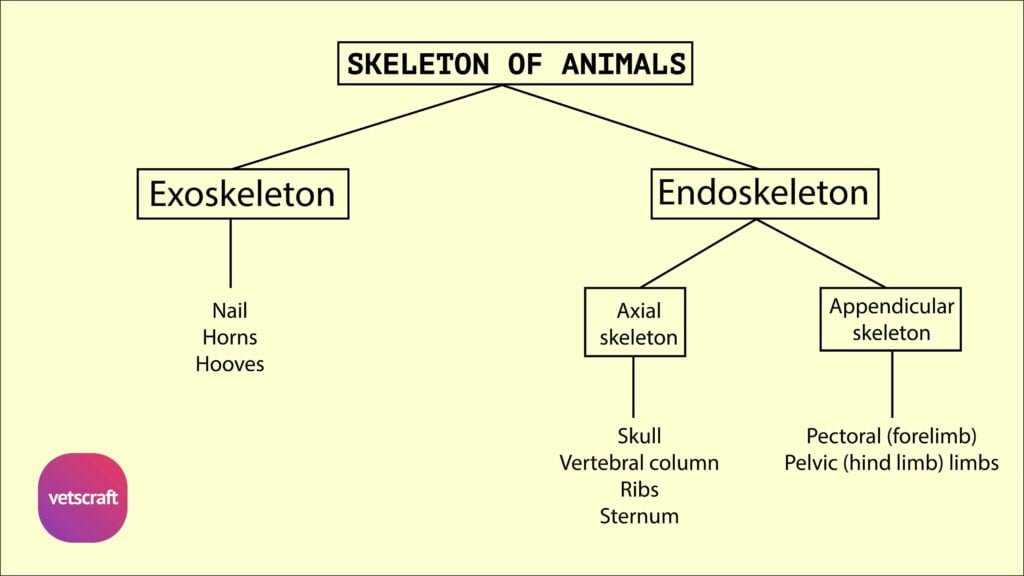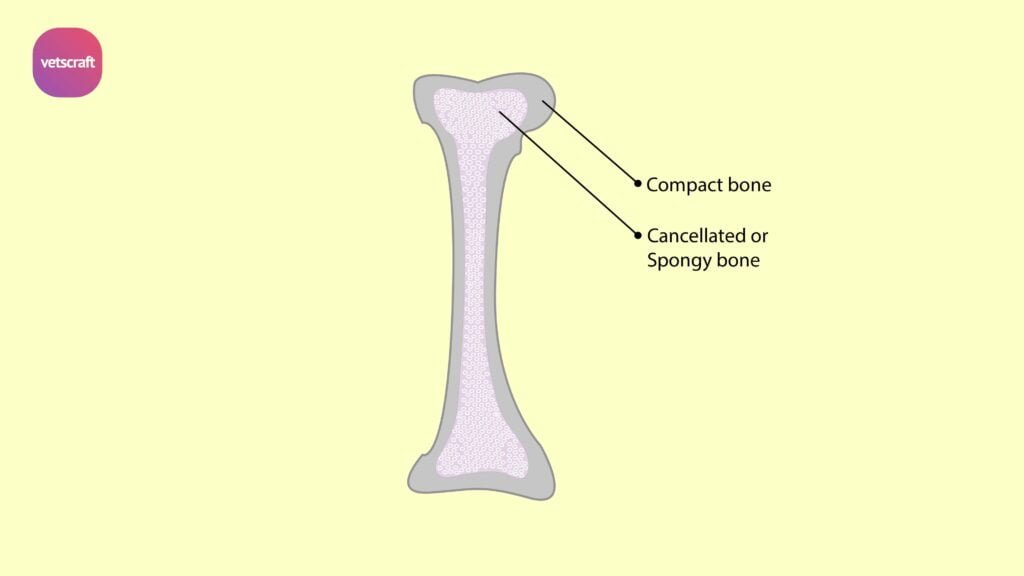TABLE OF CONTENTS
Appendicular Skeleton of Animals
The appendicular skeleton consists of the bones that form the framework of the pectoral (forelimbs) and pelvic (hind limbs), including the elements that anchor the limbs to the trunk of the body, referred to as the pectoral and pelvic girdles, respectively.
The arrangement of the bones in the girdles and the rest of the regions of the limb is similar in the pectoral and pelvic limbs.
The bones present in each species of animal represent modifications from a common pattern as part of evolutionary changes the species or group has undergone.
The general designations for the different parts of the limbs and the bones present in each are given below:
- Pectoral Limb
- Pelvic Limb
Pectoral Limb
Pectoral limb consist these regions:
- Pectoral girdle and shoulder region: Scapula, Coracoid and Clavicle.
- Arm: Humerus
- Forearm: Radius and Ulna
- Manus: Consisting of
- Carpus: A number of small bones called carpals arranged in the domestic mammals in two rows.
- Metacarpus: Typically consisting of five bones designated only by numbers 1 to 5, but showing considerable modifications in different animals.
- Digits: These form the terminal parts of the limbs and usually correspond to the number of the fully developed metacarpals. These are also designated by numbers 1 to 5. Each digit is composed of a number of bones arranged serially called the phalanges. The number of phalanges may vary (from 1 to 5) within the species and also in different digits of the same species.
Pelvic Limb
Pelvic limb consist these regions-
- Pelvic girdle and hip region: Ilium, ischium, and pubis
- Thigh: Femur
- Leg: Tibia & fibula
- Pes: Consisting of
- Tarsus (3 rows)
- Metatarsus : similar to the forelimb
- Digits: These form the terminal parts of the limbs and usually correspond to the number of the fully developed metatarsals. These are also designated by numbers 1 to 5. Each digit is composed of a number of bones arranged serially called the phalanges. The number of phalanges may vary (from 1 to 5) within the species and also in different digits of the same species.

